Welcome to an in-depth tactical analysis of VfB Stuttgart under the guidance of Sebastian Hoeneß. In this article, we will delve into the strategic intricacies that define Hoeneß’s approach to coaching and how they manifest on the pitch. From formations to pressing schemes, we will explore the key components of VfB Stuttgart’s tactical setup, providing insights into the philosophy that drives their style of play. Hoeneß’s impact on the team’s performance has been notable, and through this analysis, we aim to uncover the tactical nuances that have contributed to VfB Stuttgart’s success on the field. Join us as we unravel the tactical blueprint behind Sebastian Hoeneß’s VfB Stuttgart.
Build-up
Low Build-up
Sebastian Hoeneß sets his team up in a 1-4-2-4 formation in the low build-up. The two strikers start high, creating a massive space between the opposition midfield and backline to drop into.
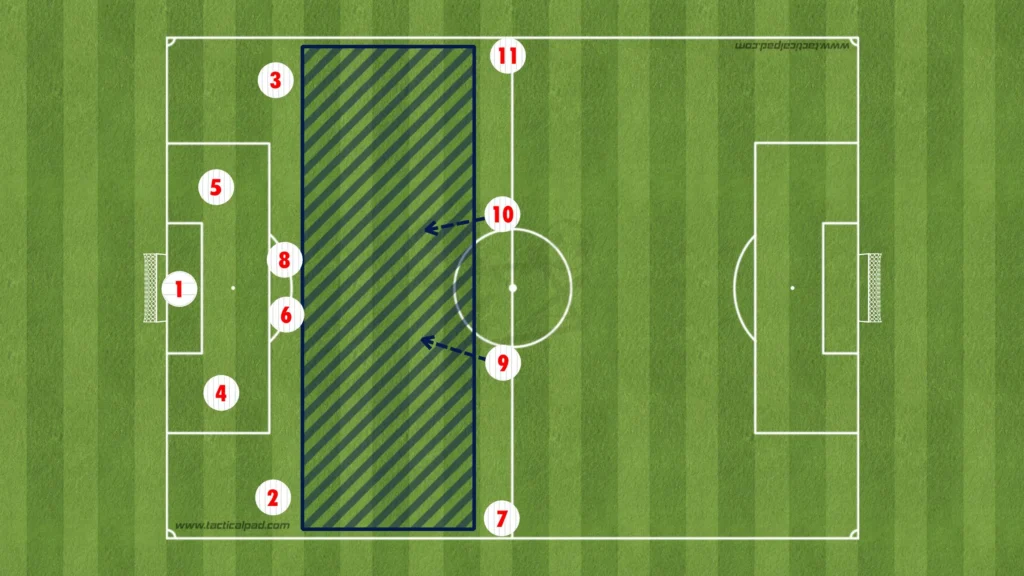
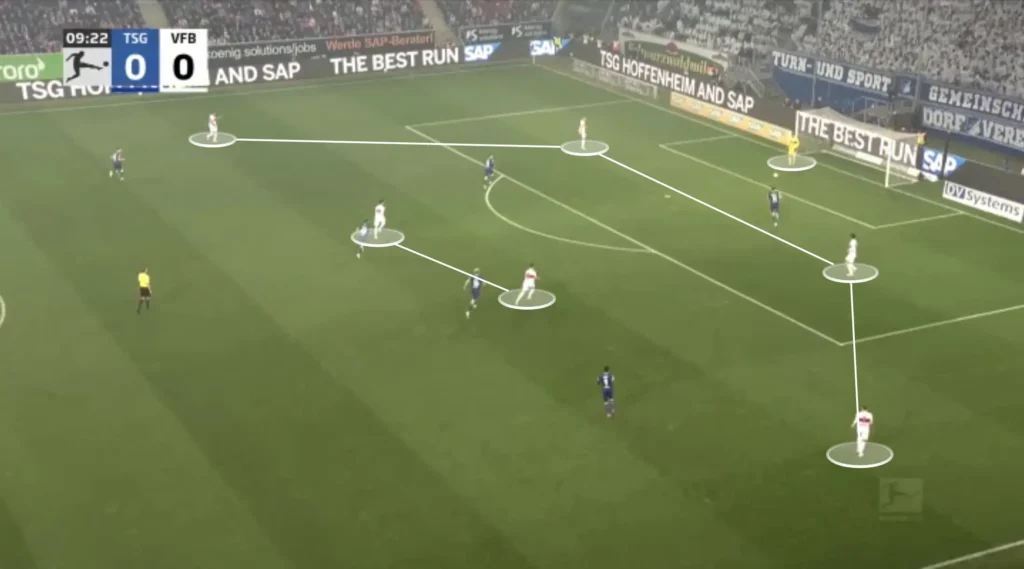
This formation, popularized by Roberto De Zerbi, questions the opposition center-backs, forcing them to make difficult decisions. If they push up on the dropping strikers, the space behind them opens up, giving the winger a 1v1 against the fullback. However, If they do not push up the strikers, a numerical superiority gets created in the midfield, allowing Stuttgart to play through the press.
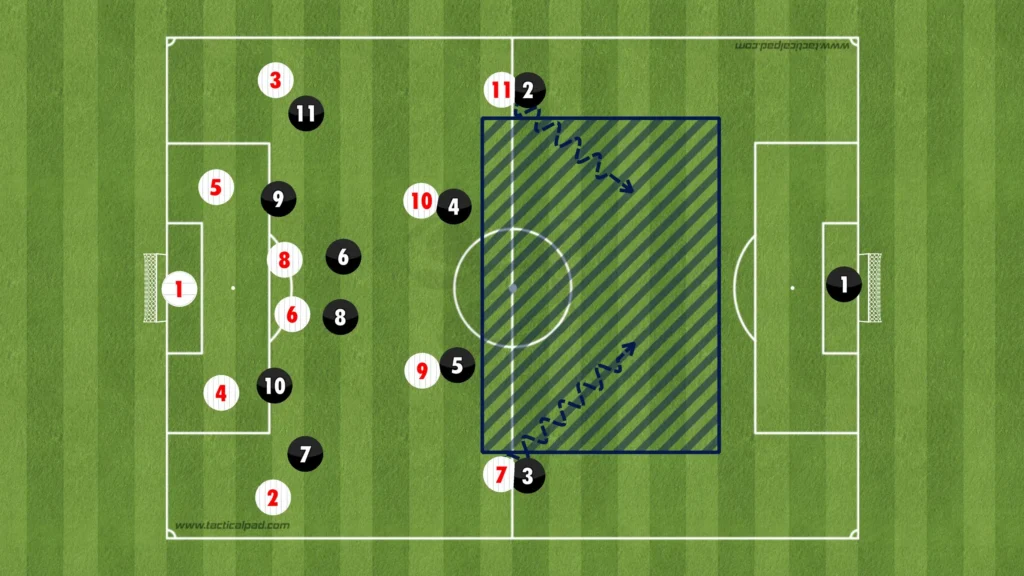
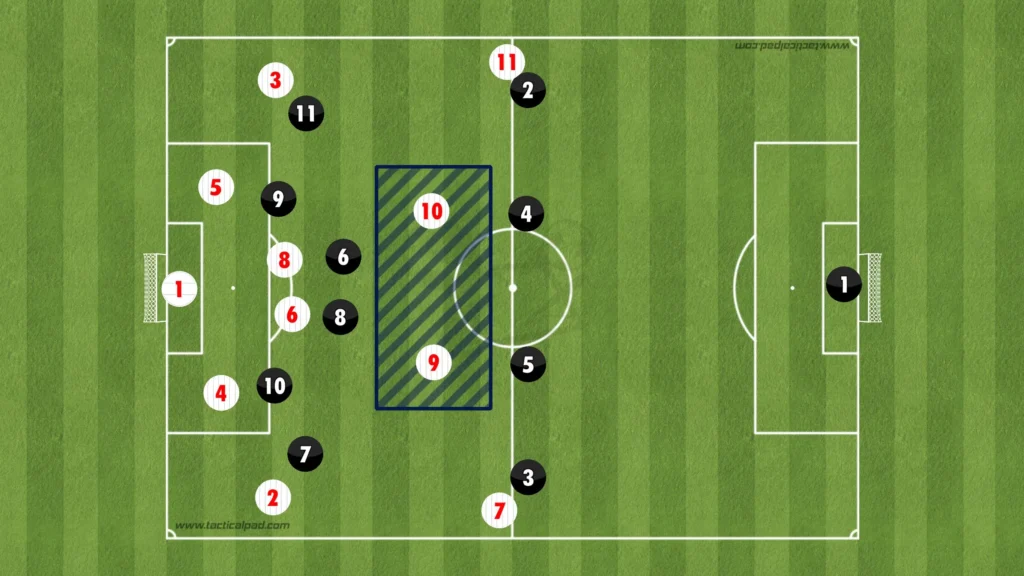
High Build-up
Sebastian Hoeneß sets his team up in a 1-3-2-5 formation in the high build-up, with a back-three, two holding midfielders, and five up front.
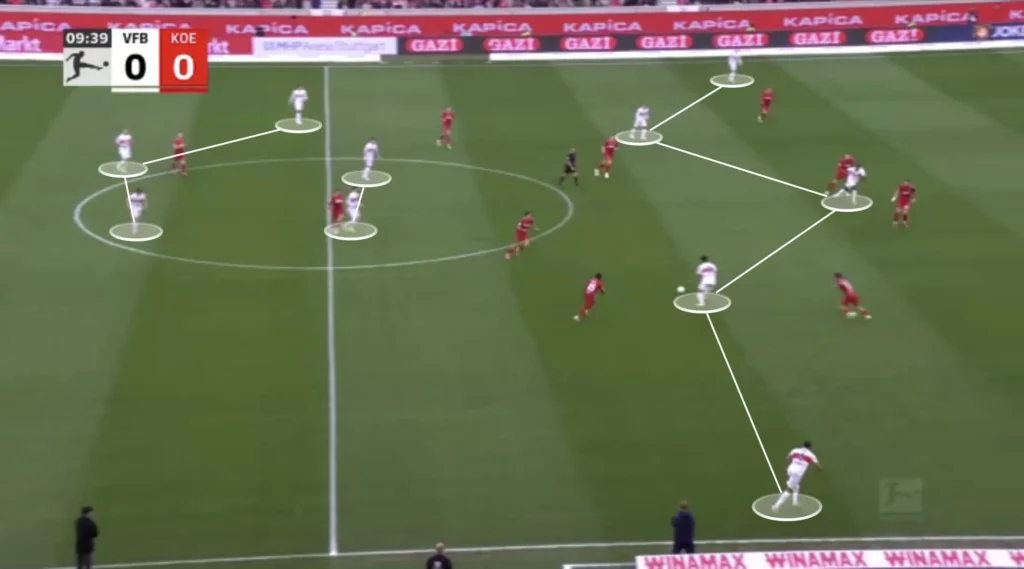
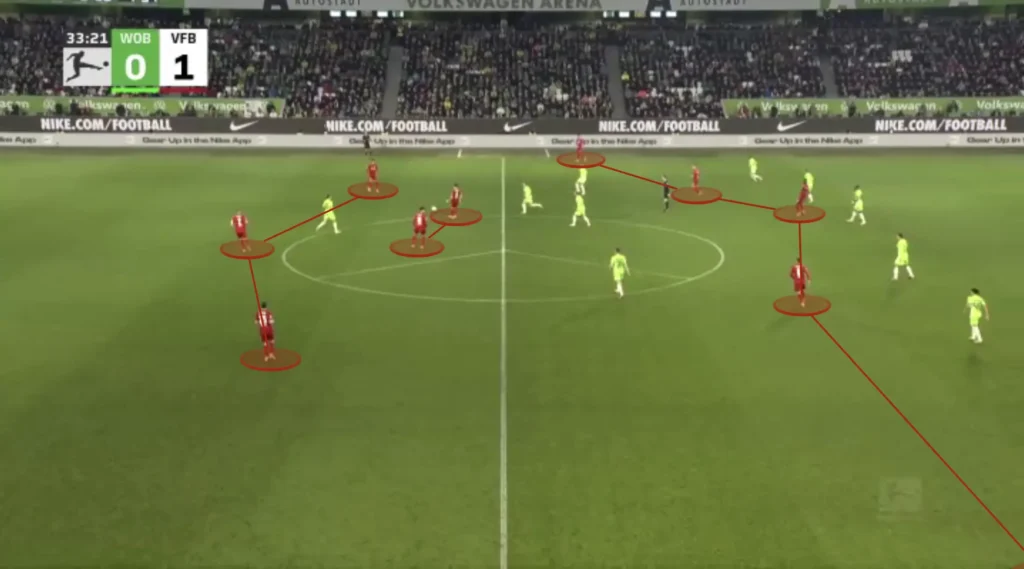
Having four central midfielders(two holding and two attacking) creates more options in the center and less space between the players. Hoeneß likes this because he prioritizes playing through the middle. He needs one player high and wide to pull apart the backline while the rest create numerical advantages in the midfield areas. This builds good conditions in defensive transitions, allowing more players to press when they lose the ball. Another purpose for keeping many players in the middle is to shorten the distance between them. This shortens the length of the passes, which naturally shortens the time between passes. This means the opposition players will have less time to push up and press, giving the Stuttgart players more time and control.
High Backline
A massive aspect of Stuttgart’s high build-up is they keep a high backline. This helps in the counterpress because they get more players closer to the center. Having more players close to the center who can win the ball back makes it difficult for the opposition to do anything when they win possession. Furthermore, the high backline shortens the distance between players, shortening the time and length of the passes and preventing the opposition from pushing up their defense.
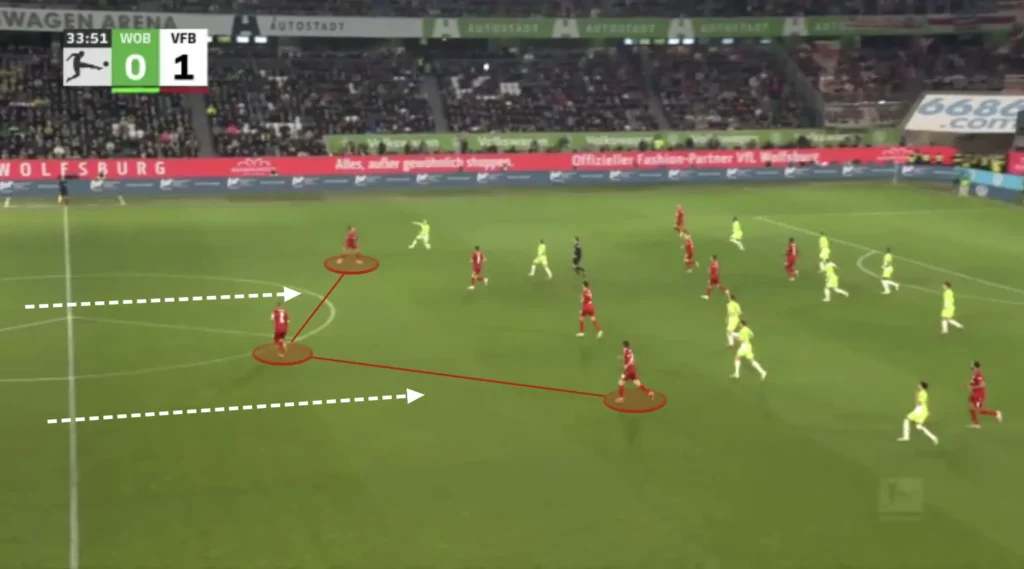
Changing Formation
Stuttgart often rotates in their build-up, creating new formations to confuse opponents. They adapt to their opponent’s formation to create numerical advantages in different areas, allowing them to beat the defense and score more goals. When playing against a front three, Sebastian Hoeneß often drops one of the holding midfielders, creating a back four. This creates a 4v3 with the backline against the opposition’s forwards instead of a 3v3, which means that one defender will be free. This allows them to use the extra player to beat the opposition’s forward line and progress the ball.
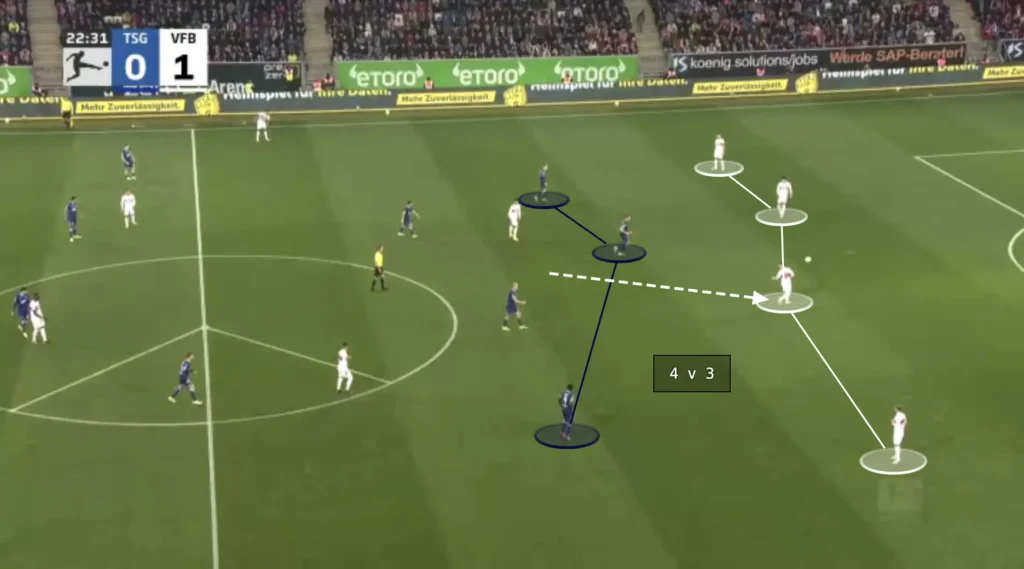
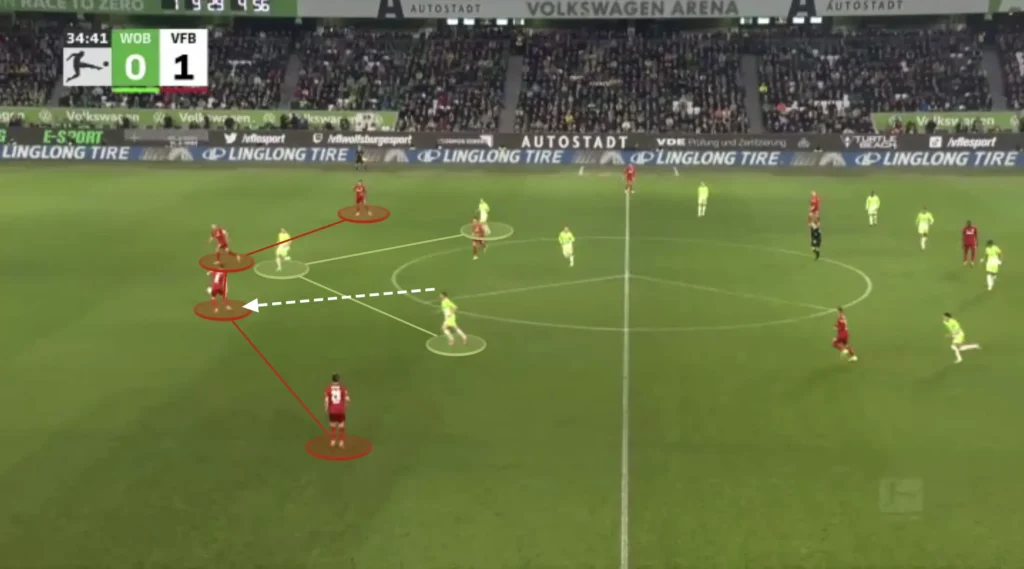
Hoeneß also changes formation sometimes, not using their usual 1-3-2-5. In some games, they have pushed one of the center-backs into the midfield, creating a 1-2-3-5 formation.
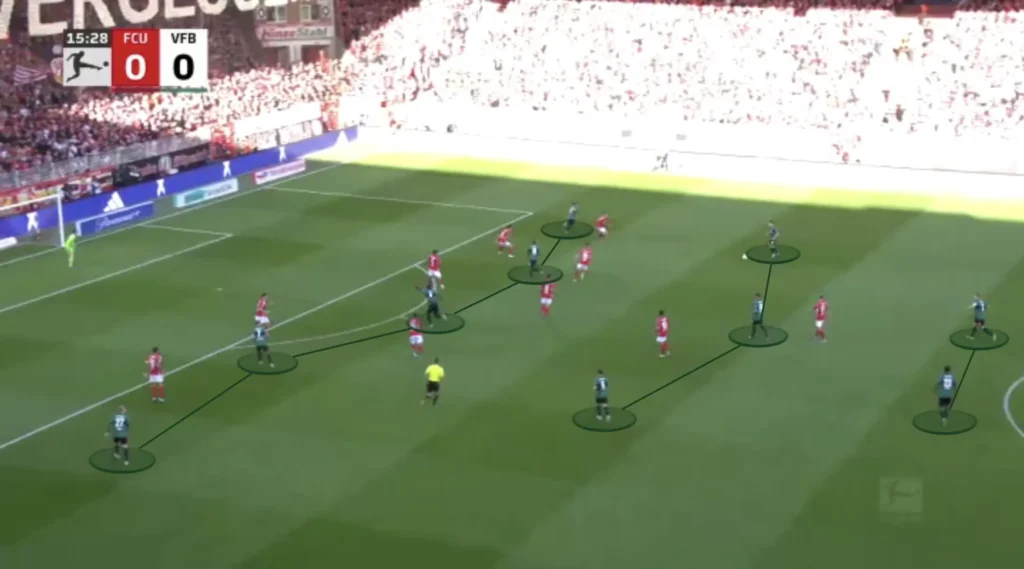
They have also used a 1-4-2-4 formation in the high build-up, the same as in the low build-up.
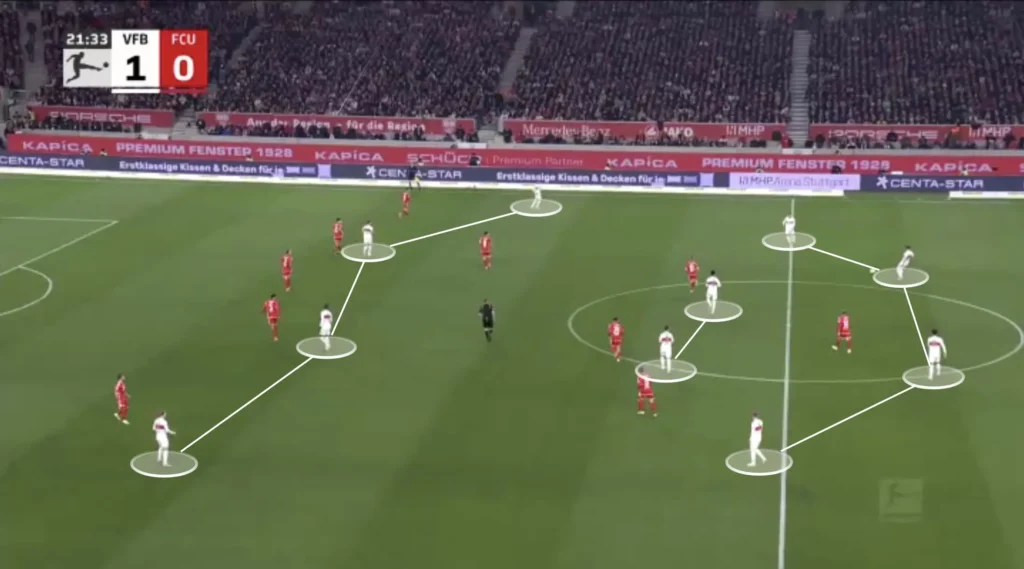
Finding the Pockets
Stuttgart always tries to find the attacking midfielders in the pockets. Their midfield numerical superiority usually means that at least one will be open. They will look for passes from the back or the wing, breaking lines and finding an attacking midfielder who will turn and drive at the defense.
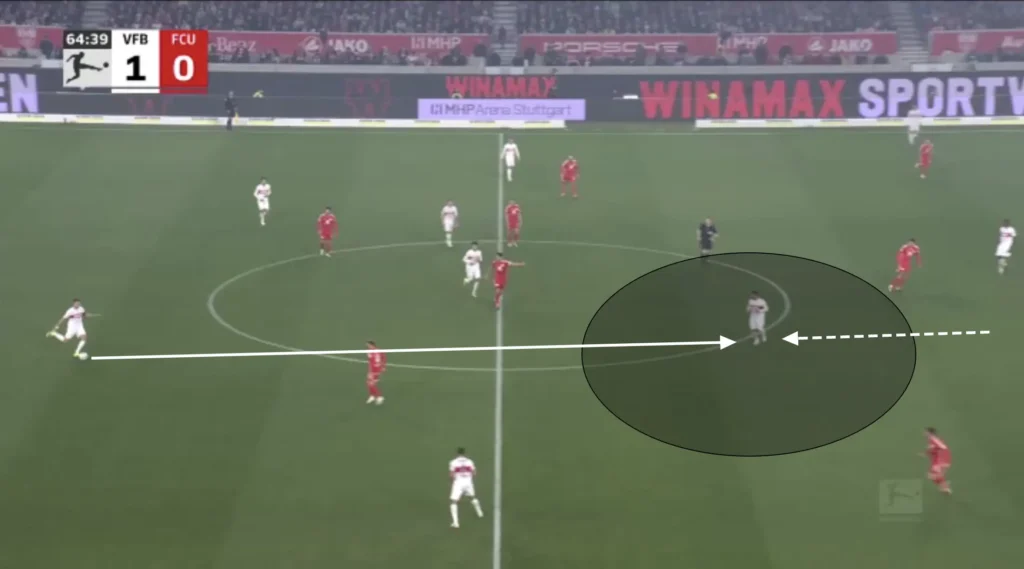
Stuttgart will also find their fullbacks and holding midfielders in these areas.
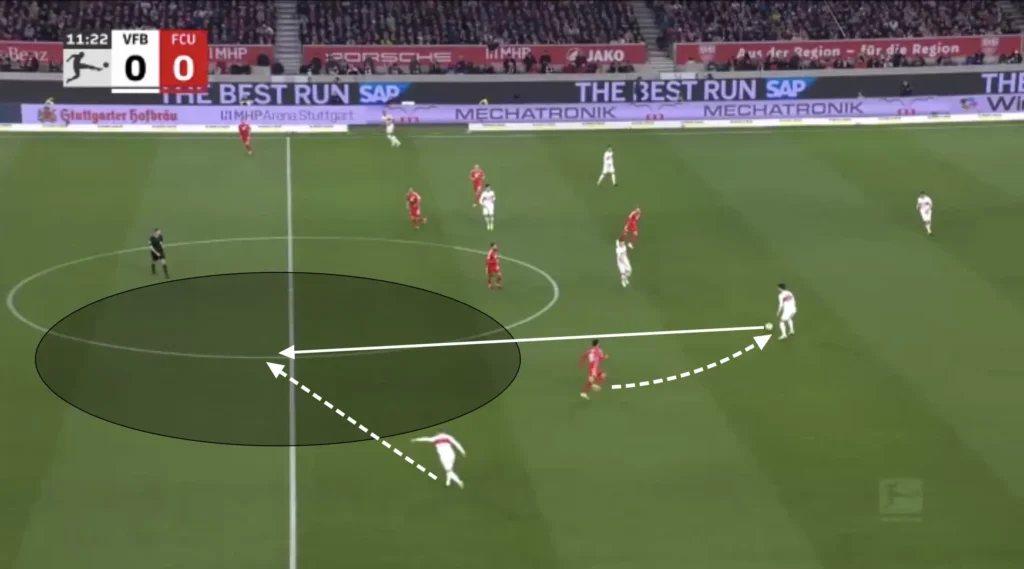
Final Third
Attacking the Half-Space
Stuttgart is a good team in the final third. They create many chances, mainly by attacking the space between the opposition center-back and fullback. They primarily do this from the wide areas with underlaps from midfielders or sometimes the wide center-backs.
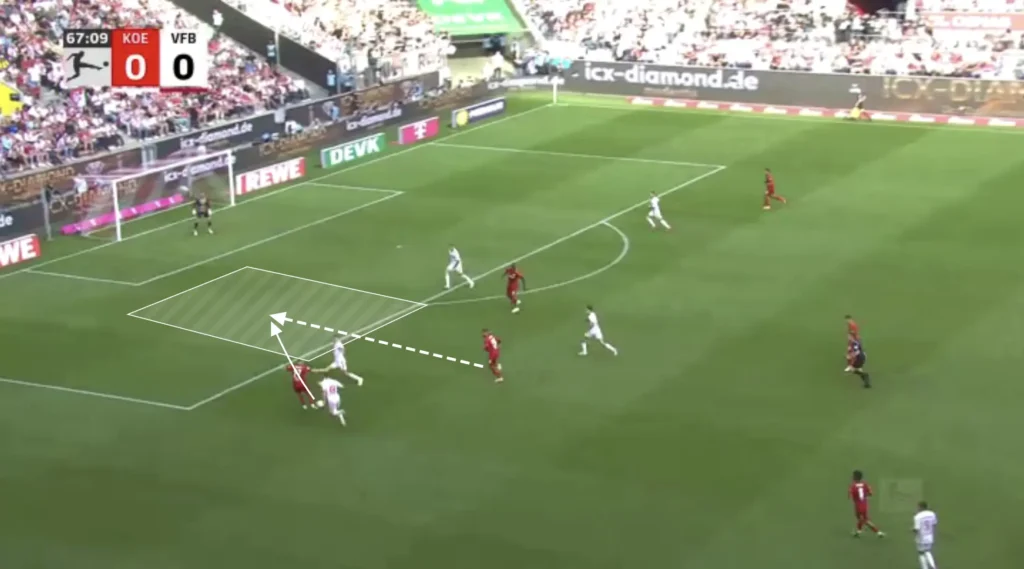
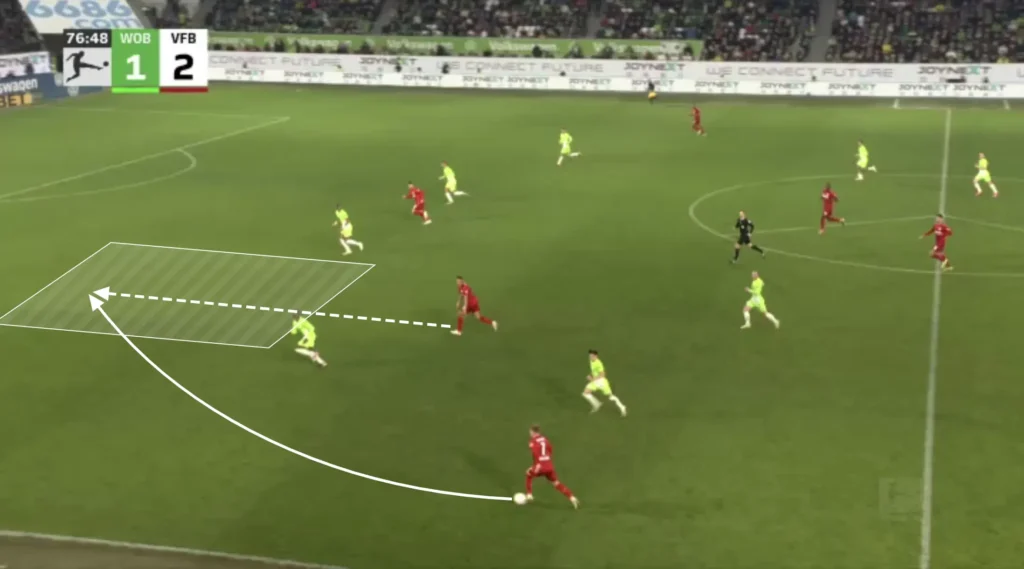
The winger can either play the ball to the underlapping player, who can cross to a teammate in the box, or take the ball inside to combine with an attacker or shoot. Here, the underlapping player’s run drags away an opposition midfielder, which opens up the space for the winger to take the ball inside and shoot.
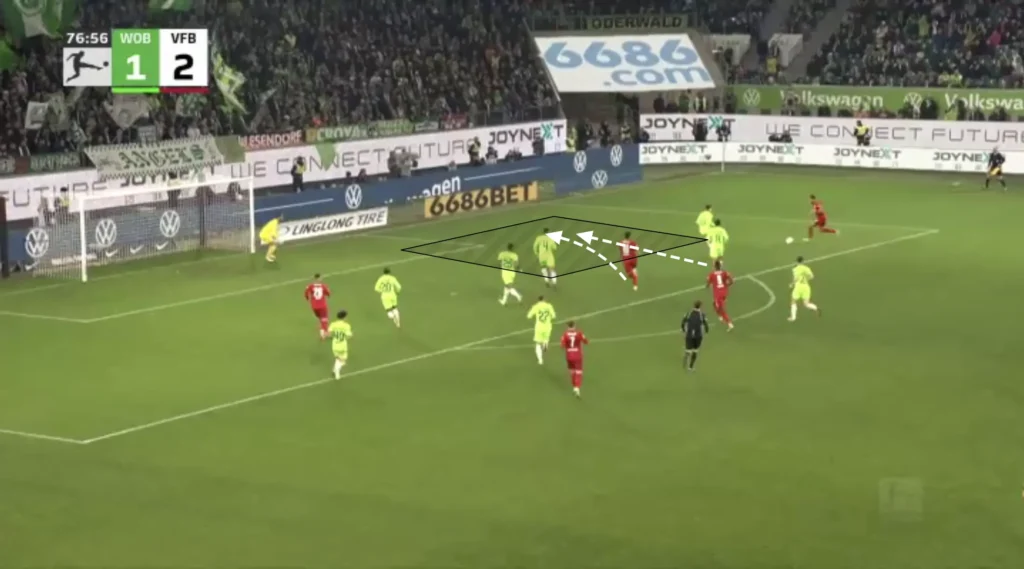
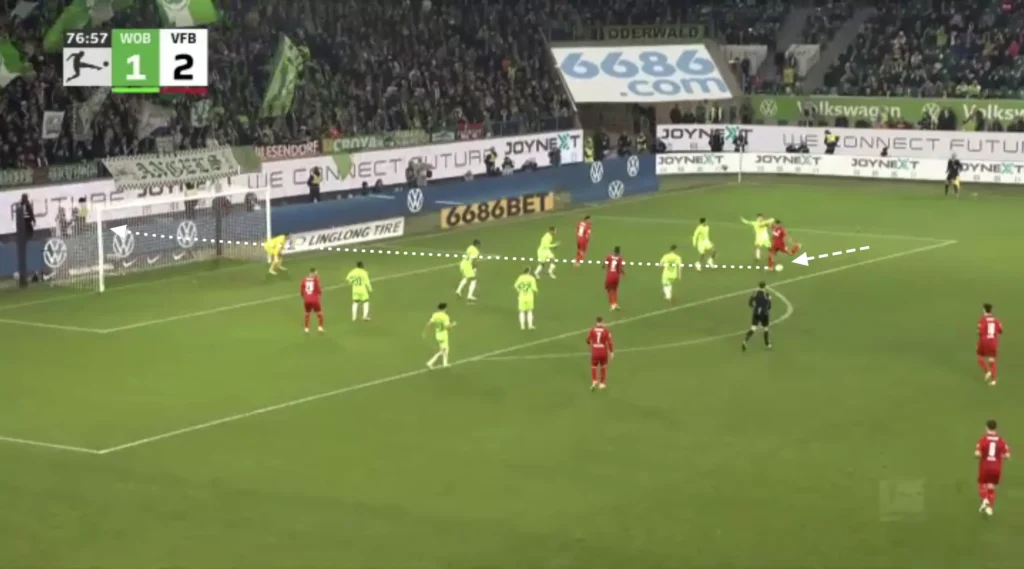
Overlaps
Stuttgart often uses the overlap to produce opportunities in the final third. When the winger gets the ball, a Stuttgart player quickly makes the overlap, creating a 2v1 on the wing. If the opposition fullback drops to cover the overlapping run, the winger could cut inside, taking a shot or combining with a midfielder. If the fullback covers the center, the ball can easily be played to the overlapping player, creating a crossing opportunity.
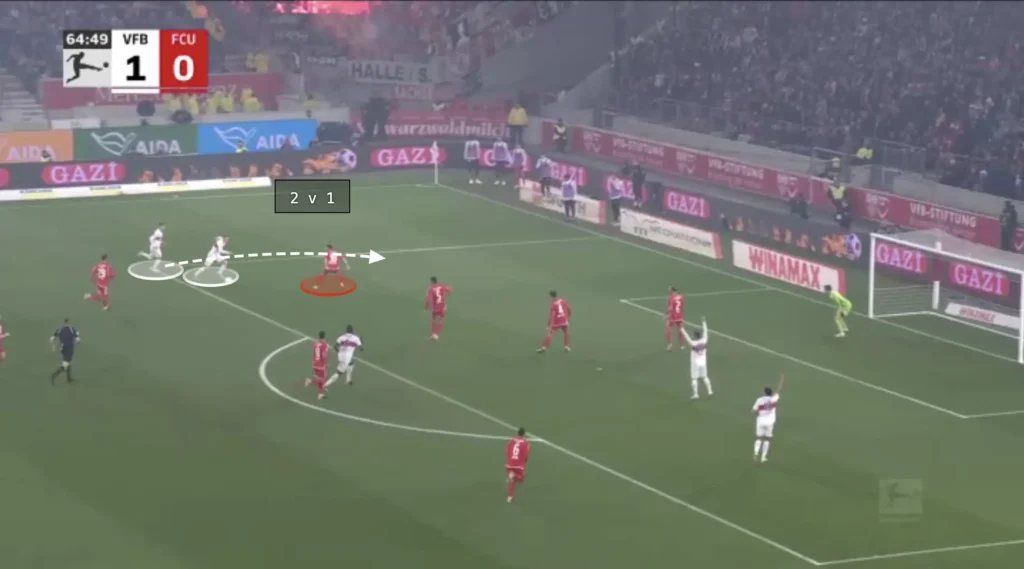
Runs in Behind
Stuttgart are good at converting situations where an attacking midfielder runs at the defense. The attacking midfielder will wait for a center-back to push up and open the space in behind. The striker will run into the opened space and receive a pass from the midfielder. Stuttgart have incredible timing in these situations, always releasing the ball at the right moment.
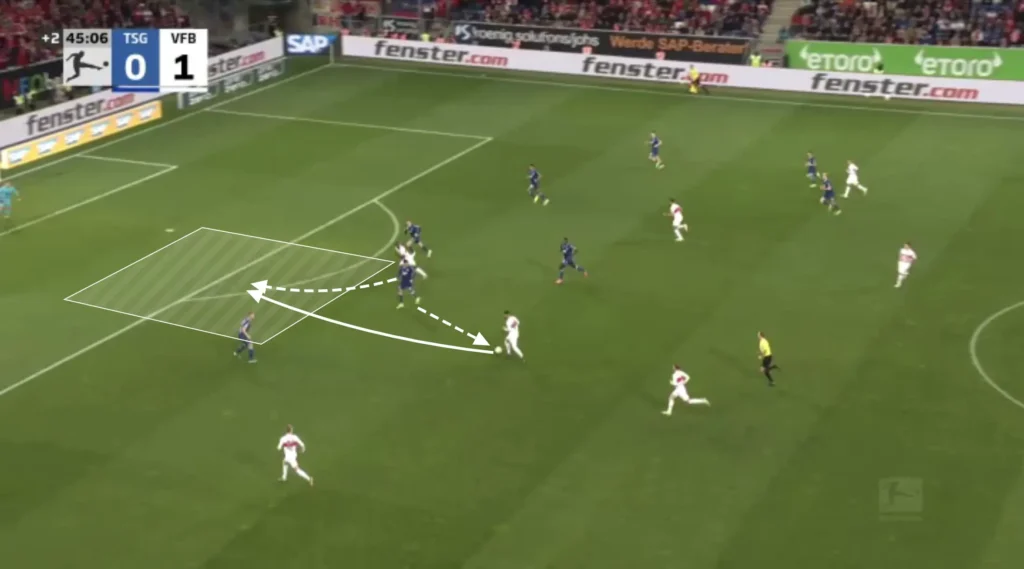
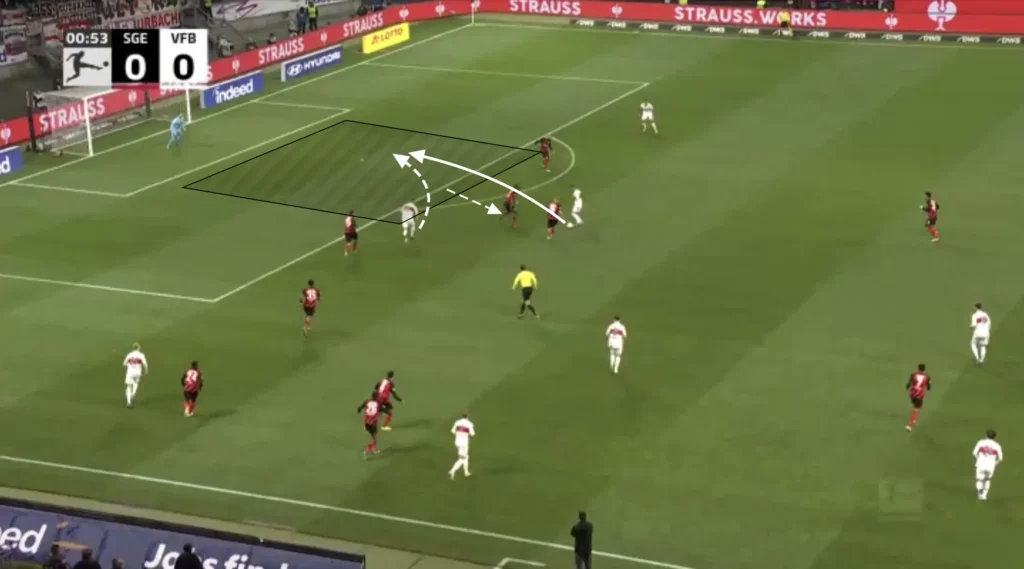
Many Players in the Box
The attacking midfielders also look to make runs into the box when the ball is in the final third, often getting four or five players into these areas to create overloads. The numerical advantages in the box force the defending team to make decisions and leave some players open.
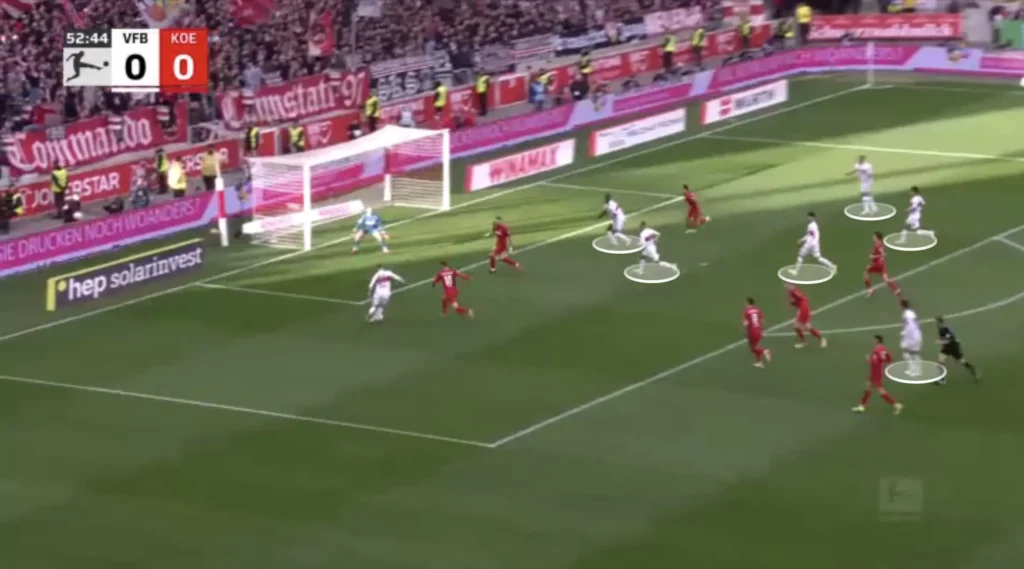
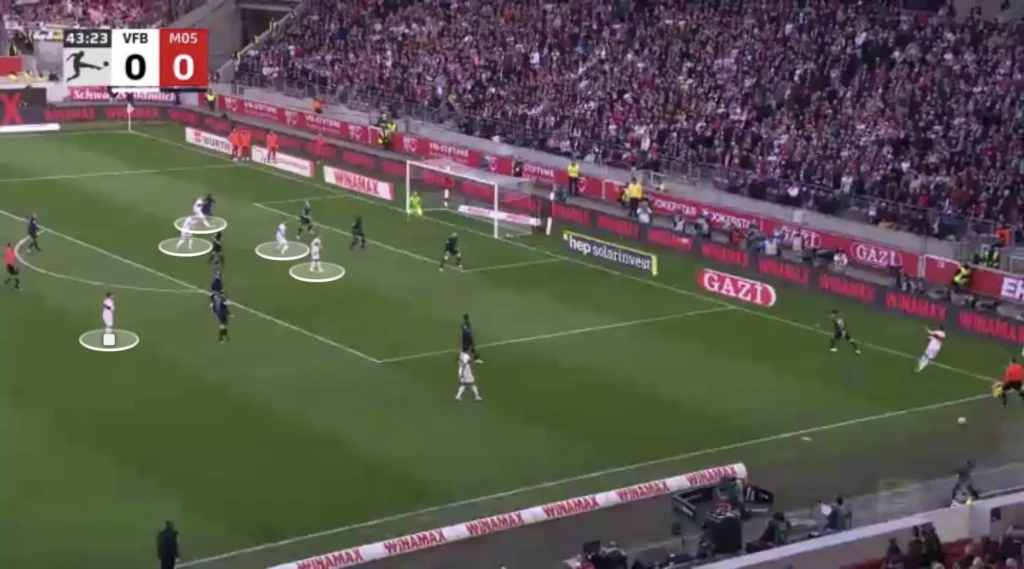
Principles and Tools
Rotations and Interchanges
Sebastian Hoeneß has repeatedly shown that he wants his team to play attacking and offensive football, regardless of the opposition. They like keeping possession and are often successful in doing so. One influential principle in doing this is to be fluid within the system and to find different interchanges and rotations. Their most frequent rotation is when two players in the half-space switch places to pull their defenders away and create more space and confusion.
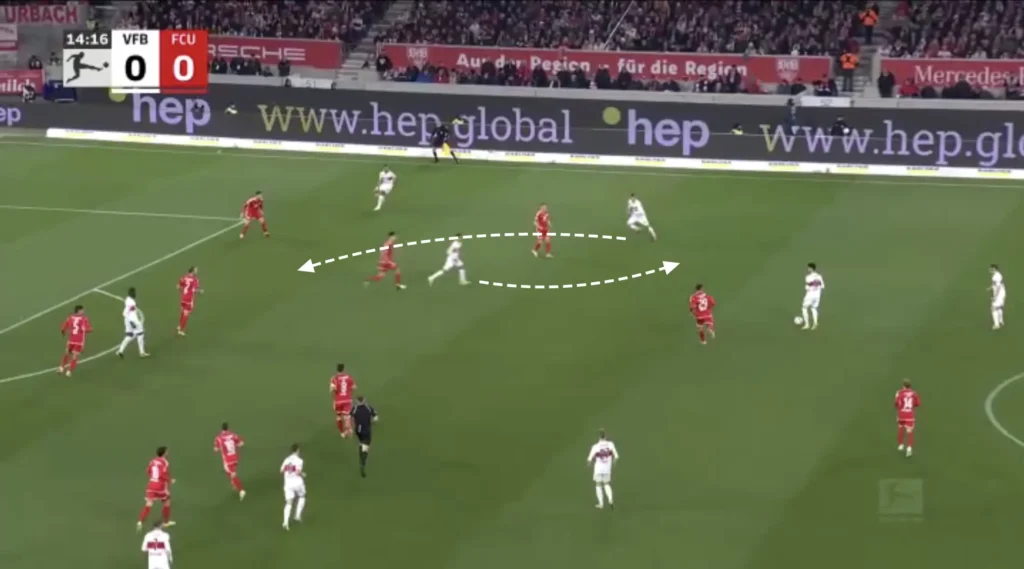
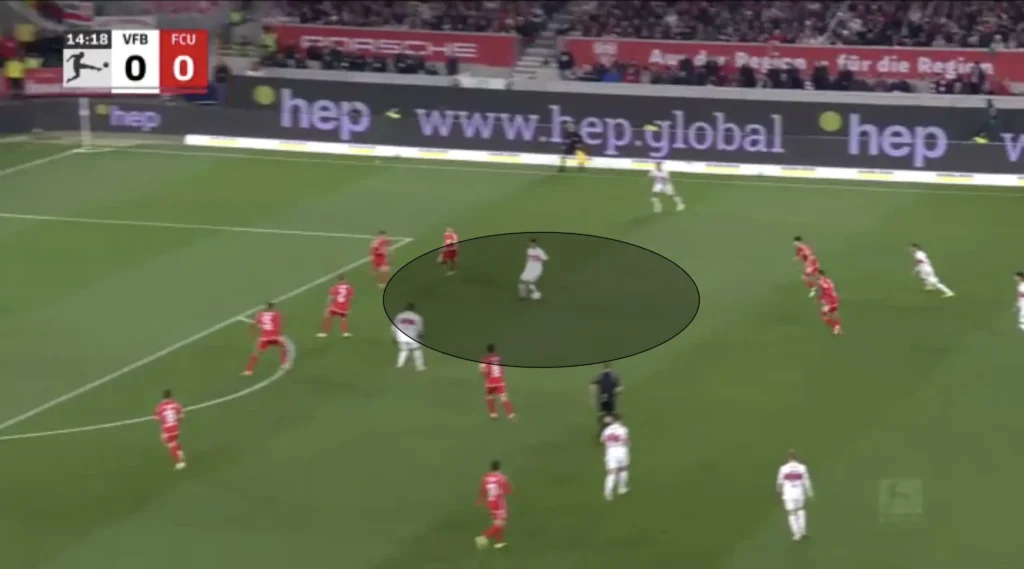
Third-man
Sebastian Hoeneß likes it when his team plays through the opposition when possible. One vital tool that they often use is the third-man principle. This means using a third player to reach a free player whose passing lane is blocked.
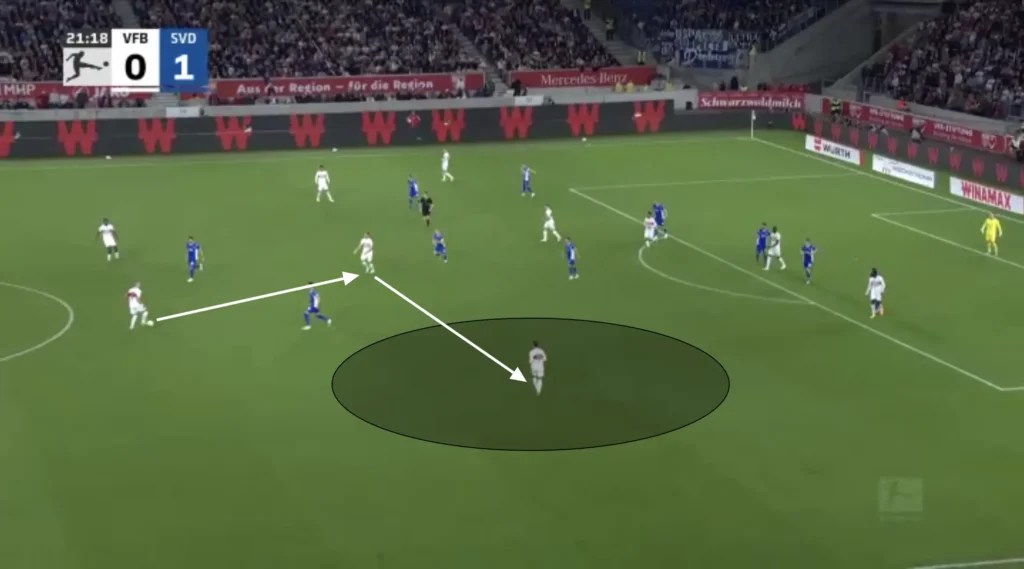
A common third-man pattern in Stuttgart’s low build-up is when the center-back uses the dropping striker as the third-man to find a forward-facing midfielder. This pattern continues with a fourth-man run from the fullback, who gets played in by the holding midfielder.
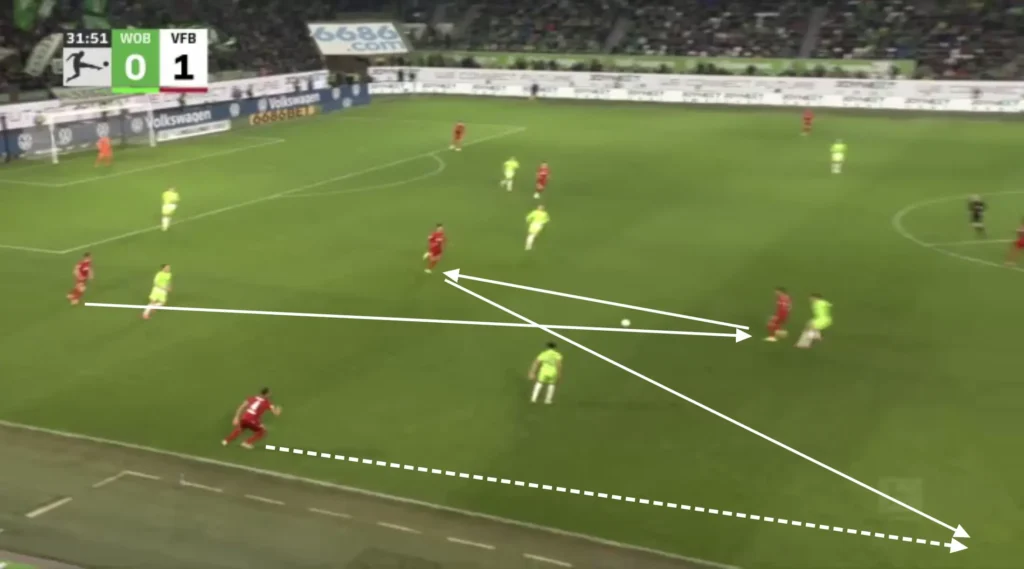
Numerical Advantages
A massive aspect of Stuttgart’s high build-up is their ability to create numerical advantages against the opposition’s defensive line. Their front five naturally becomes numerically superior against a back four, which they are great at taking advantage of.
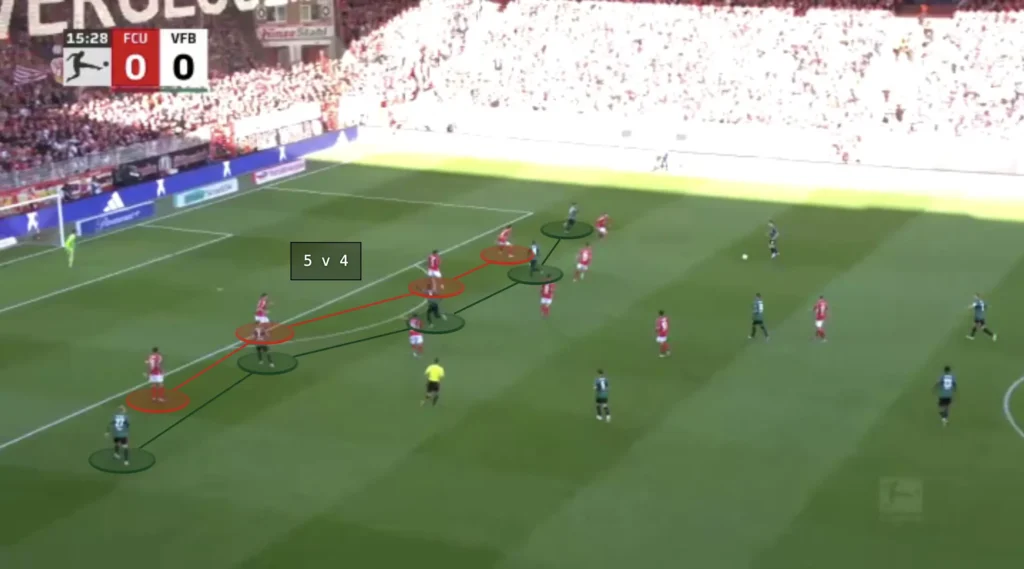
They often exploit this numerical superiority with a counter-movement between the winger and attacking midfielder. When a wide center-back has the ball, the attacking midfielder will run up to the fullback while the winger drops to open a passing lane. This creates a question for the fullback. If he steps out on the winger, the space inside opens up for the attacking midfielder. However, if he stays inside to cover the midfielder, the ball can be played to the winger, who can turn and attack the defense.
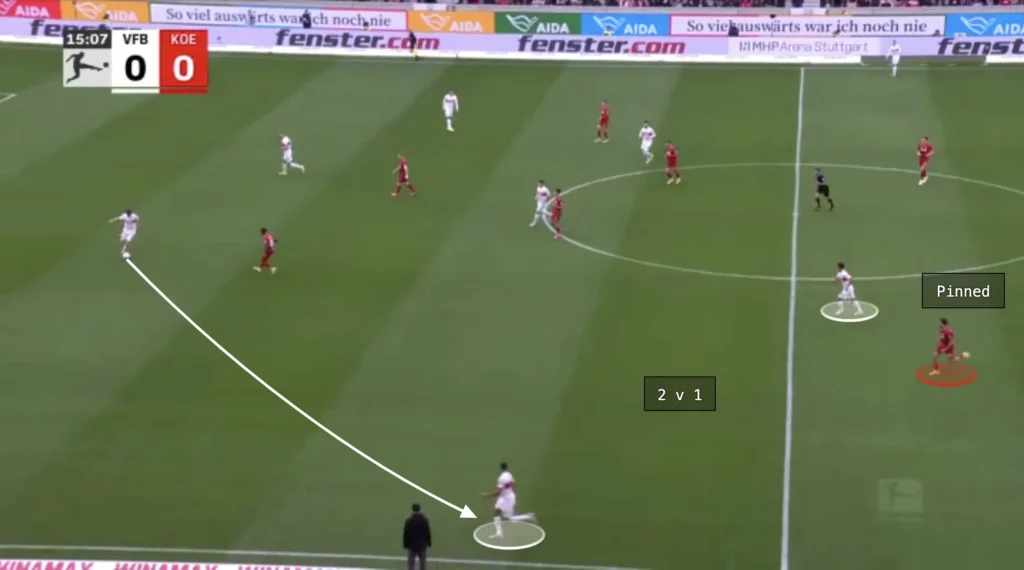
Defending
High Press
Sebastian Hoeneß places much value in being aggressive without the ball. This shows in Stuttgart’s high pressure. Hoeneß usually wants his team to go man-to-man and intensely press the opposition. They almost use their high press as an attacking threat, scoring many goals from winning the ball high up the pitch.
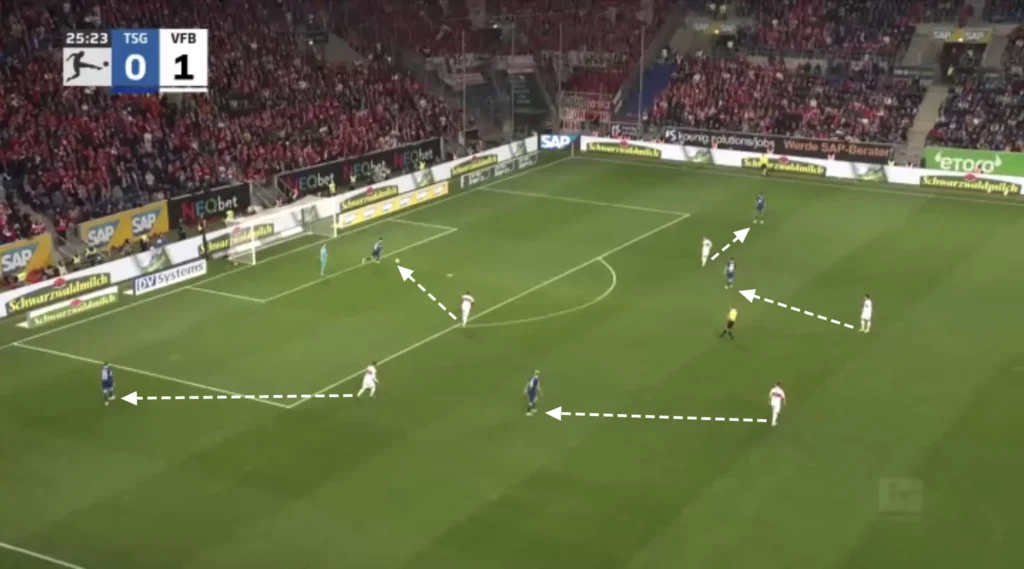
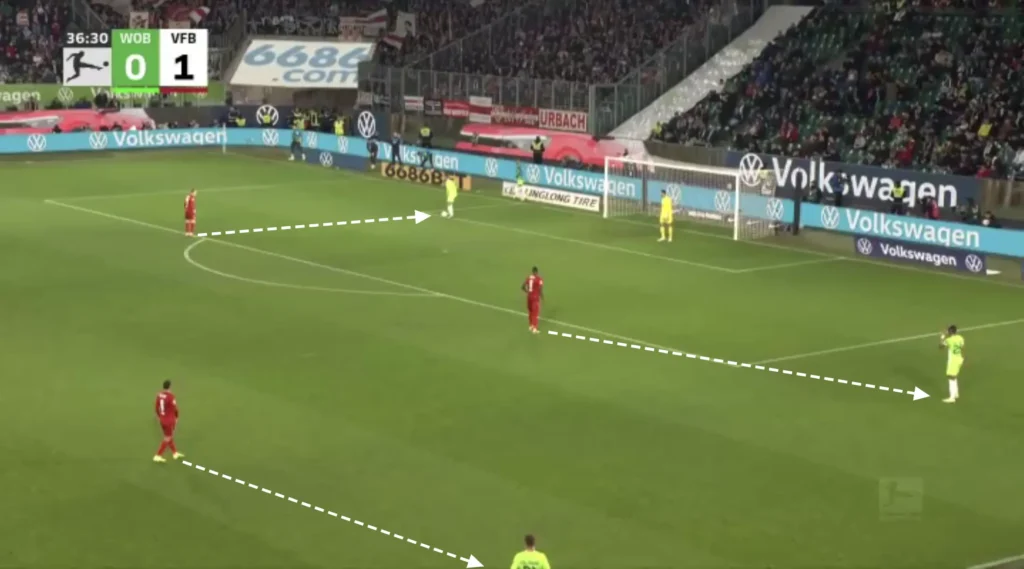
Low Press
Sebastian Hoeneß’s Stuttgart uses a 1-5-2-3 formation in the low press. They look to set up in a mid-block, always trying to close the center, forcing the opposition out wide.
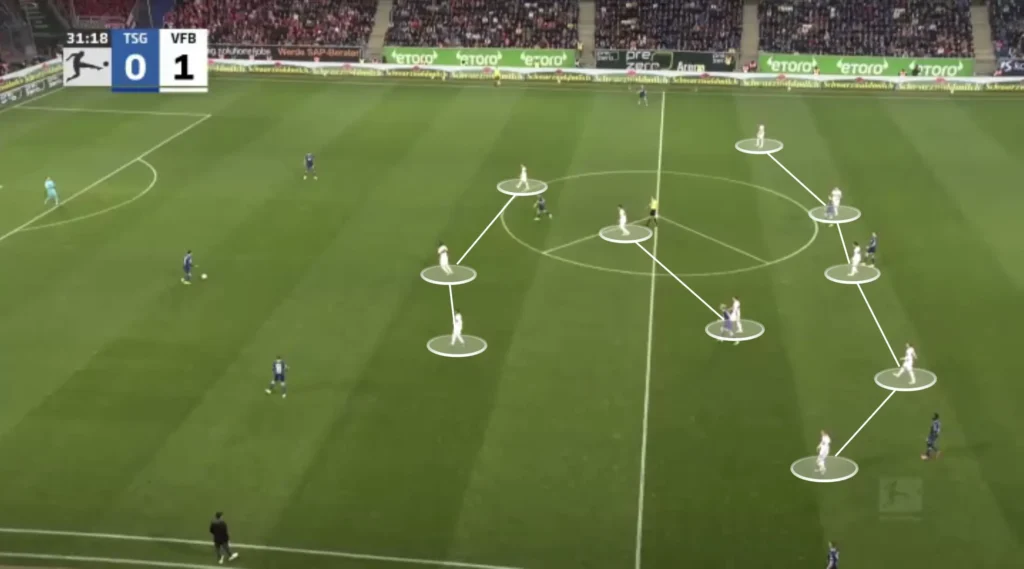
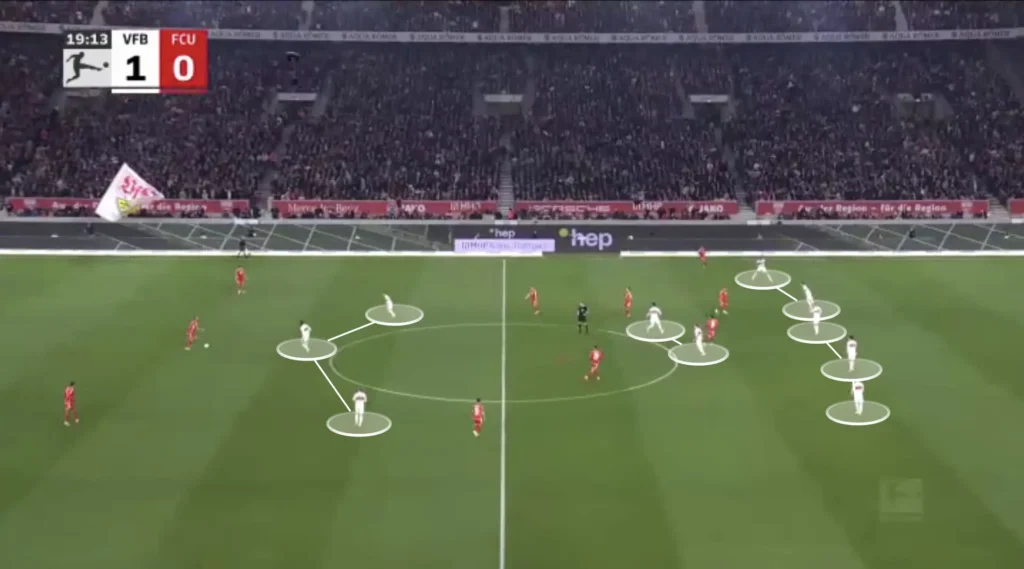
Stuttgart looks to squeeze the pitch when defending. This means constantly pushing the team up as much as possible. Every time the opponent plays a slow, sideways pass or a back pass, Stuttgart’s first line of pressure pushes up, with the rest of the team following to stay compact. When the next pass comes, they push up even more, forcing the opponent back even more. They do this because it pushes the opponent further away from Stuttgart’s goal, making it harder to create chances.
Transitions
Defensive Transitions
Positioning many players centrally, creating a numerical advantage in the midfield, creates good conditions in defensive transitions. Many players close to the ball after losing possession means that many players can work towards regaining possession. Therefore, Stuttgart often successfully regains possession directly after losing it.
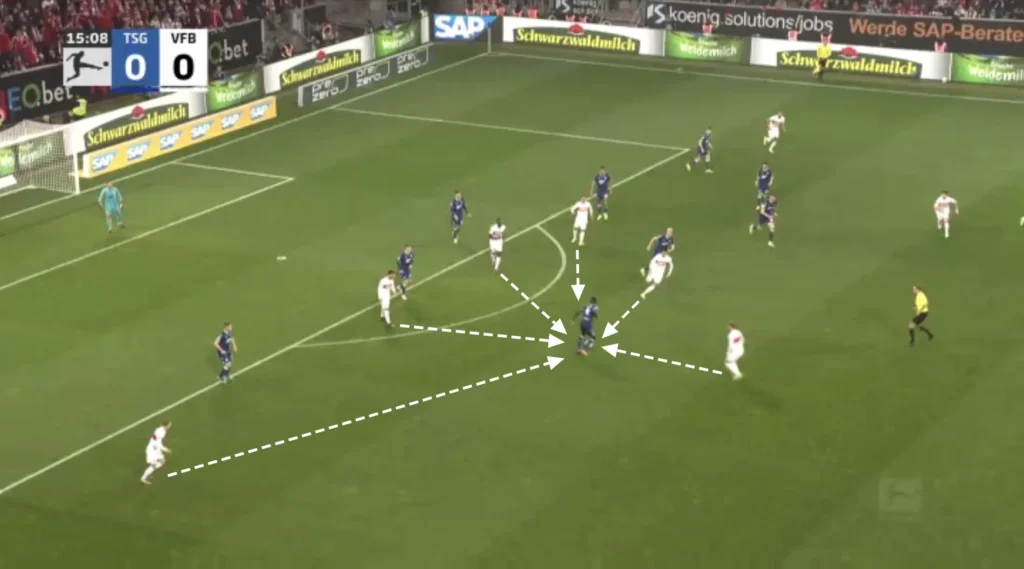
Offensive Transitions
Sebastian Hoeneß also wants his team to counterattack in their offensive transitions. They do this with a high tempo, often attacking the spaces between the center-backs and fullbacks. In addition, keeping many players centrally while defending enables them to incorporate more players into the counterattacks.
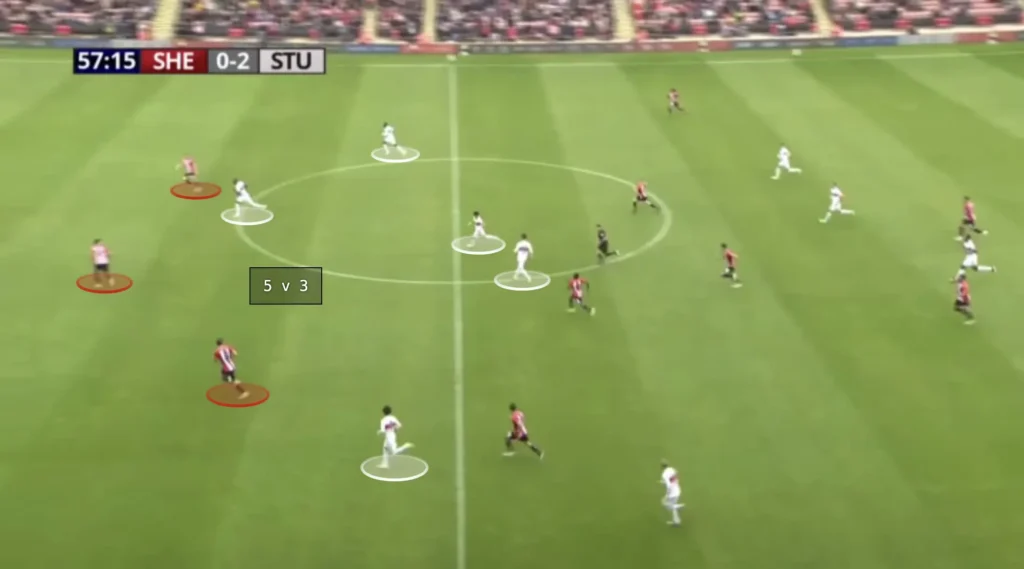
Final Thoughts
In conclusion, this tactical analysis has provided a comprehensive insight into the strategic brilliance of Sebastian Hoeneß at VfB Stuttgart. By meticulously examining formations, player movements, and strategic principles, we’ve uncovered the dynamic and innovative approach that defines Hoeneß’s tenure at the club. His emphasis on fluidity, pressing, and positional play has transformed Stuttgart into a formidable force on the pitch. As Hoeneß continues to refine his tactics and inspire his players, Stuttgart fans can look forward to an exciting journey ahead, marked by tactical astuteness and continued success on the field.
